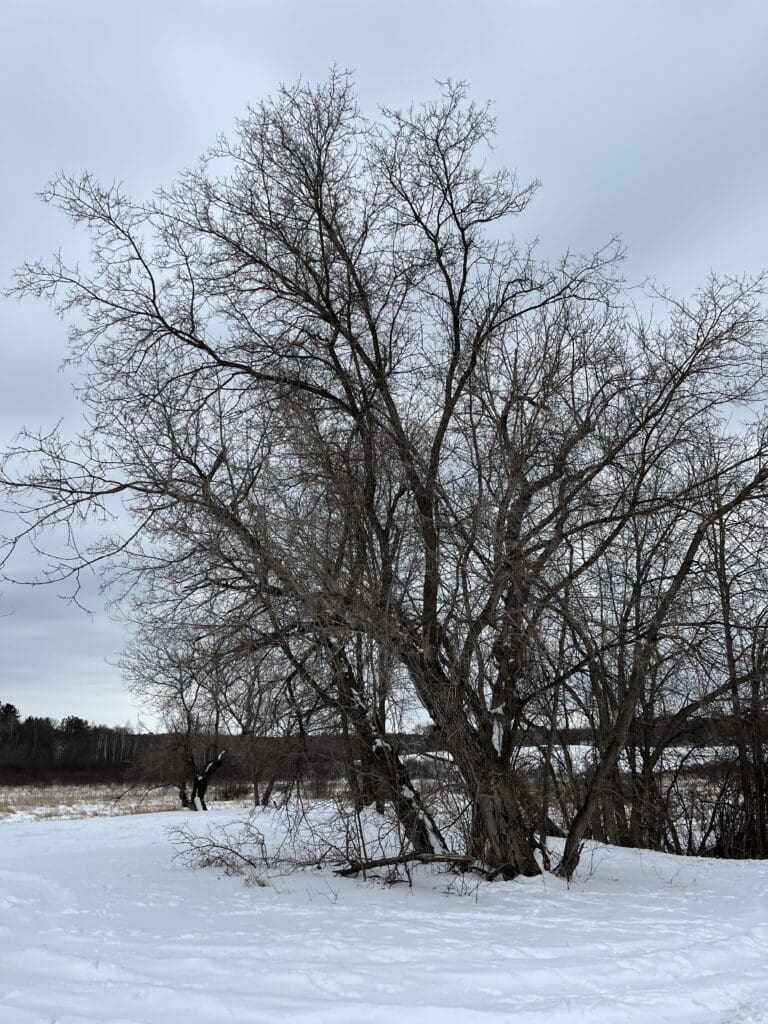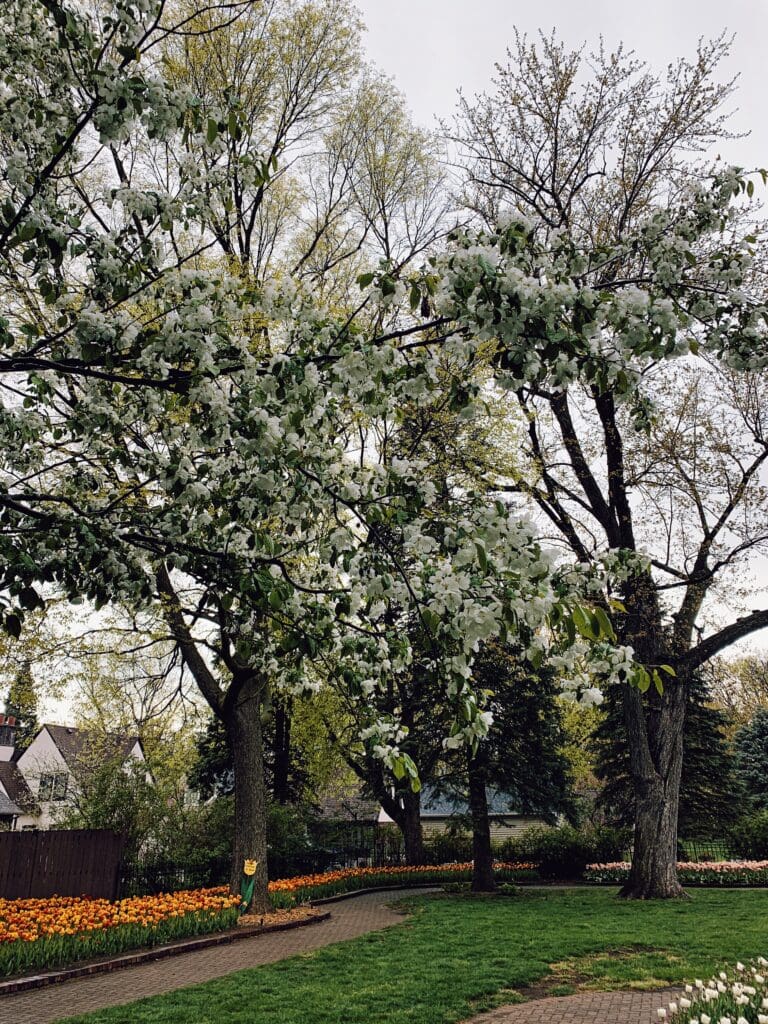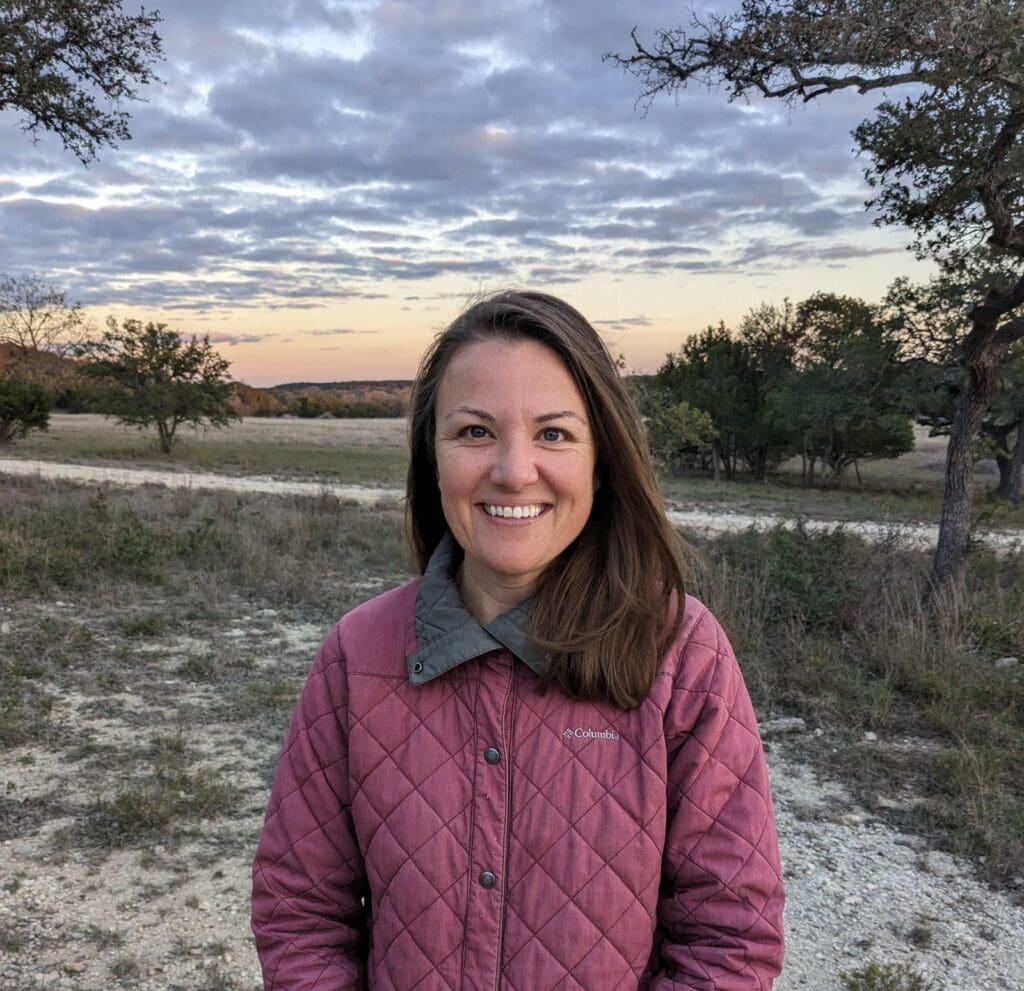“Seeking the Beauty of Trees”
Written by Nicki Johnston
*Please note that Well-Read Mom has affiliate relationships with Bookshop.org, Ave Maria Press, and Ignatius Press. We will earn a commission if you click through and make a purchase.”
On the First Sunday of Lent, one of our parish’s deacons gave the homily. He spoke about how, when his family first moved to Kansas City one summer, he was struck by the beauty of the trees. He had moved from the desert and wasn’t accustomed to so much green. Now, of course, the trees aren’t green. He likened the bleak, bare winter landscape to the Lenten season. We repent and let go, just as the trees let go of their leaves, he said, trusting that come Easter, come spring, we can glory in the Resurrection.
This reminded me of Brother Lawrence’s conversion moment. Dorothy Day writes in her Introduction to The Practice of the Presence of God that “One winter day he noticed a tree stripped of its leaves and reflected that before long leaves would appear anew, then flowers and then the fruit, and that this consideration gave him so striking an idea of the Providence and might of God that it had never since been effaced from his soul” (9).
But this isn’t the only tree we’ve read about in this Year of the Seeker. T.S. Eliot refers to yew trees (a symbol of death? Or immortality?) in Four Quartets, and a tree is the means of Charis’s escape to safety. Annie Dillard’s search for and encounter with “the tree with the lights in it” recurs throughout Pilgrim at Tinker Creek, and both Van and Davy cite trees as part of their conversions. Davy’s “Sin Picture” is of a tree, and it was “The Shadow of a Tree”, the cross-shaped shadow of the mast and yard, that inspired Van to consider Christianity.

Clearly, there is something going on here. It makes sense to me that trees are meaningful to Christians. There’s the Tree of Life in the garden, the wood of the manger and the cross (have you read The Tale of Three Trees with your children?), and in the very first Psalm, the blessed man is likened to a tree. There is much to ponder here.
I hadn’t previously made these connections. Or, more clearly, what my mind understood hadn’t penetrated my heart. Yet I have experienced firsthand God’s faithfulness in the cyclical nature of the seasons of His created world, just as Brother Lawrence did.
In addition to my reading journals and commonplace books, I keep two nature notebooks. One of them is a Calendar of Firsts. As I go for walks with my children, either in our neighborhood or out in more wild areas, I keep my eyes attuned to the firsts that we encounter: the first green shoots or maple buds, the first sounds of redwing blackbirds or spring peepers, the first time we spot turtles near the pond or see tulips in the garden, etc. I mark the dates of these firsts in my journal, and the act of seeking them helps me to attend better to the beauties of the natural world before me.
And because I’ve been doing this for years (six to be exact), I can clearly see the beautiful order of God’s creation. Inevitably, I’ll see something new – like the magnolia buds on the tree we passed on the way home from daily Mass one morning – and think “Spring is coming so early this year!” But then I take out my journal to record the date and realize that, in fact, it’s just like last year. A clear sign of God’s faithfulness and providence.
I make entries in this journal year-round, but spring is the season in which I have the most. It’s the time of year teeming with change, newness, and rebirth. Every day, we encounter some new flower or leaf or bird, and I delight in recording all of these in my nature journals.
In A Severe Mercy, Vanauken writes about beginning to suspect that all the yearnings he had ever felt “- when autumn leaves were burning in the twilight, when wild geese flew crying overhead, when I looked up at bare branches against the stars when spring arrived on an April morning – were in truth yearnings for him” (94). The Catechism affirms this by saying, “God speaks to man through the visible creation. The material cosmos is so presented to man’s intelligence that he can read the traces of its Creator. Light and darkness, wind and fire, water and earth, the tree and its fruit speak of God and symbolize both his greatness and his nearness” (CCC 1147).
Like Vanauken, I, too, long for spring and for God to reveal himself to me in the changing of the seasons. This year, though, we will be traveling during much of spring. For years, we have planned a huge road trip to coincide with the April 8 eclipse. We’ll drive south to Texas, then west to California, and back via Arizona and New Mexico. We’ll be reversing our deacon’s move and leaving the lush Kansas City spring for the desert.
In Pilgrim at Tinker Creek, Annie Dillard writes that being “’very sensitive to the changing seasons’ is one of the few good reasons to shun travel” (76). As much as I’m looking forward to this trip, I’m also sad about what I’ll be leaving behind at home. In Dillard’s words, “I don’t want to miss spring this year” (75). I know what marvels God will perform, and I’m disappointed that I won’t be home to witness them. But I take comfort in his fidelity and knowing that they are happening without fail. As Dillard writes, “Beauty and grace are performed whether or not we will sense them. The least we can do is try to be there” (10). I may not be at home to witness God’s acts of beauty and grace here, but I do plan to be attuned to them as I travel to the southwest next month.

My other disappointment is being away for my monthly Well-Read Mom meeting. I’ll miss the discussion of Brideshead Revisited, which I plan to reread on my trip (looking out this time for references to trees). This is one of my favorite books, and though I know the story and characters well, I don’t know exactly what I’ll take away from this read of it – just like I don’t know exactly what our trip will have in store. Sure, we have an itinerary and know where we’ll be driving and sleeping each night, but the actual experience of the trip isn’t something that can be planned. This, I think, is a key part of seeking. Even when we have a destination in mind, we can find ourselves surprised on the way – or even upon our return. In T.S. Eliot’s words,
We shall not cease from exploration
(“Little Gidding” Four Quartets)
And the end of all our exploring
Will be to arrive where we started
And know the place for the first time.
When we return home after our exploring, we will have missed some of the spring that we’ve grown to know and love each year, but we’ll also come with eyes to see it afresh. And after weeks in the desert, I’m sure we’ll be very happy to return to our beloved trees.

Nicki Johnston
Nicki Johnston is a home educator, a CGS catechist, an avid reader, an amateur naturalist, and a member of Well-Read Mom. She lives in Kansas with her husband, Graham, and their four young sons.
About Well-Read Mom
In Well-Read Mom, women read more and read well. Our hope is to deepen the awareness of meaning hidden in each woman’s daily life. We long to elevate the cultural conversation and revitalize reading literature from books. If you would like us to help you select worthy reading material, we invite you to join and read along. We are better together! For information on how to start or join a Well-Read Mom group visit our website wellreadmom.com

